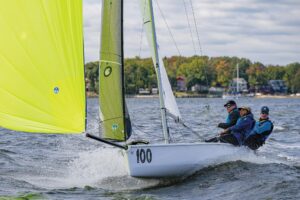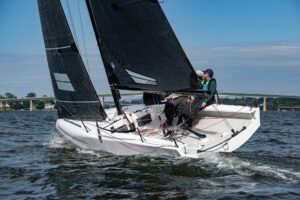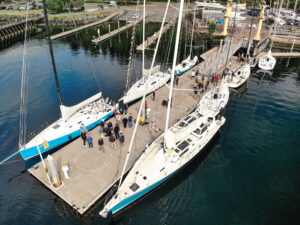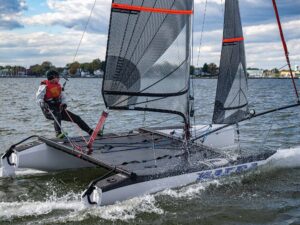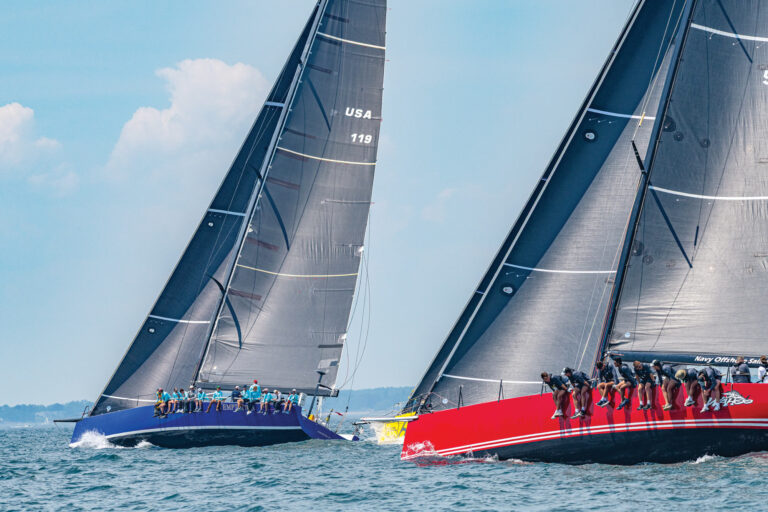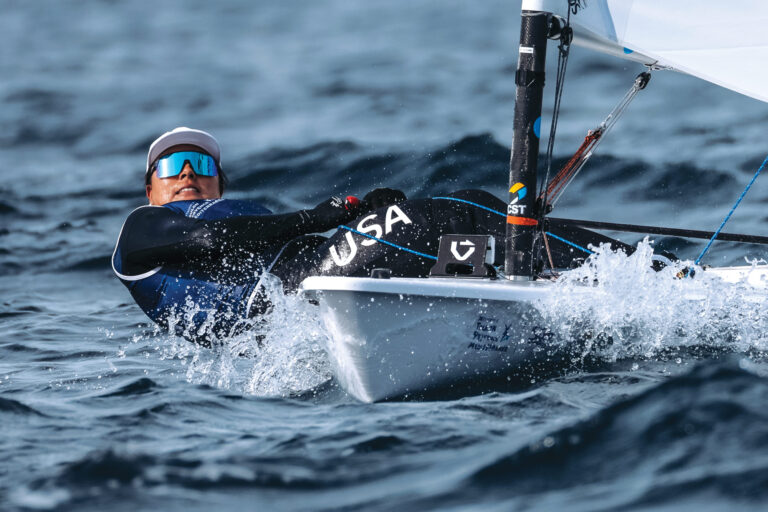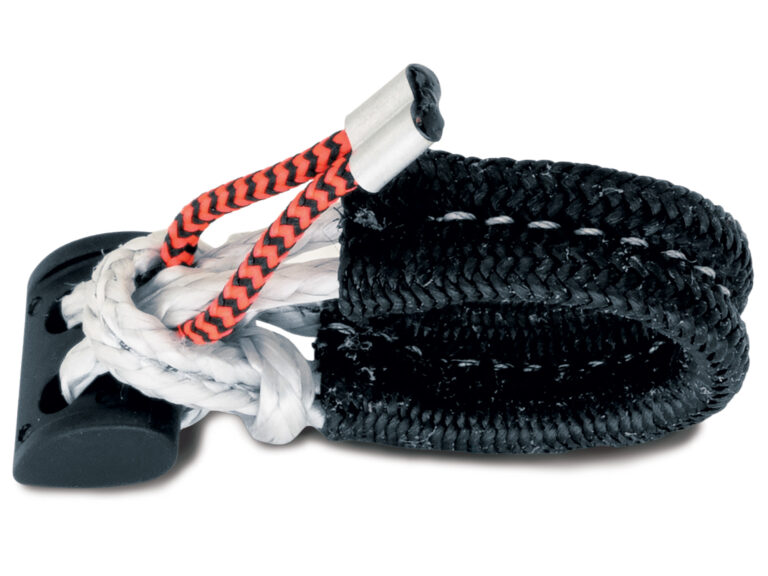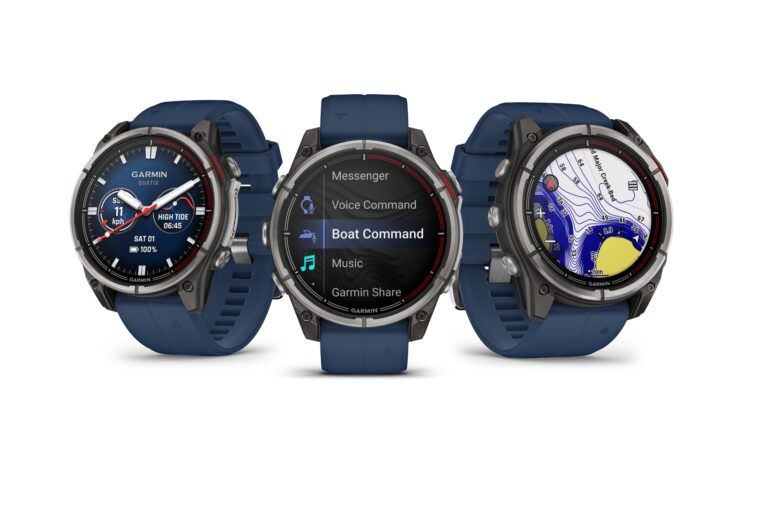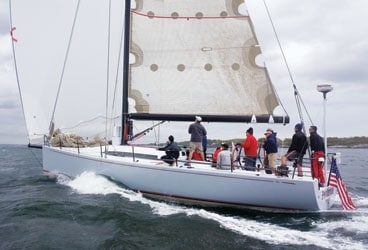
A turbocharged version of a production canting-keel design ripped it in the Block Island Race this year. From our July/August 2007 issue.
One of the faster boats at this year’s annual Block Island Race-a 185-nautical mile jaunt that takes racers the length of Long Island Sound, around Block Island, then back up the Sound-was a canting-keel 50-footer designed by Farr Yacht Design and built by Cookson Boats in New Zealand. Privateer, owned by Ron O’Hanley, completed the course in 24h:32m, took first in IRC Zero, and was third overall behind two of the largest boats in the fleet, the 90-foot Reichel/Pugh Rambler, and the 66-foot R/P Blue Yankee.The Cookson 50 was originally intended as a production canting-keeler with a trim tab on the keel for lift, rather than daggerboards. After evaluating the performance of the original boats, and running the IRC numbers, O’Hanley, his captain Ian Henderson, and Farr Yacht Design modified the basic design so that the keel trim tab was fixed on centerline and a retractable canard was added forward of the mast. “Turbo is an overused word, but it represents what this boat is doing,” says Jim Schmicker, head designer at Farr Yacht Design. “We put 750 millimeters on the height of the fore triangle and “P”, moved the forestay out 300 millimeters, and the boom has gotten longer by 150 mm.” Lifting dagger boards, however, were not penalized by the rule-makers at IRC, and thus became a viable option for the Cookson 50. “The canting keel cants to 35 degrees; it’s a healthy angle that gives you most of the advantage of having a canting keel,” says Schmicker. “The efficiency of the foil goes down past 40 degrees or so, as would the efficiency of the trim tab. If you’re doing buoy racing, there’s no substitute for a canard to carry the side loads. It’s wishful thinking to say a tabbed fin will be that efficient.” The biggest difference between the original Cookson 50 and this version is the boat’s performance in light air. “The Cookson 50 was originally designed for sailing in Australia and New Zealand, with a little bit more breeze, so they backed off on the sail area,” says Schmicker. “When the design became popular, and started winning, we wanted it to be good in light air as well. Once the wind speed gets below six or seven knots, it needed some more sail area. By adding depth to the keel adding the canard, we’ve amped the performance at the other end of the range, especially in strong wind and reaching. The canard makes a huge difference in upwind performance as well.” The last four Cookson 50s were built with the canards and bigger rigs, and many of the older ones have been retrofitted to the new design.SpecsLOA 50′ LWL 48’Beam 14’6″DSPL 15,200 lbs.Sail Area u/d 1,700 sq. ft./3,573 sq. ft.Draft 11’Design Farr Yacht DesignBuilder Cookson BoatsSails North Paint Systems AwlgripMast/Rigging New Zealand Rigging Instruments OckamDeck hardware Harken, SpinlockRigging hydraulics CooksonEngineering Cookson/FarrIRC 1.349

